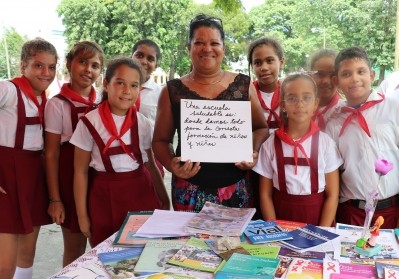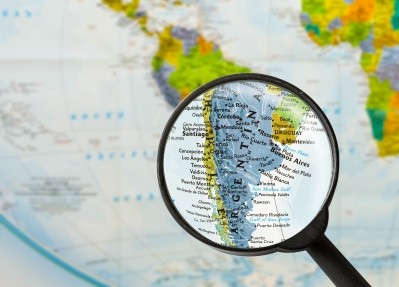Nutrition in Health Focus Could saves Millions of Lives, WHO says

To achieve the life-saving goal, health services will need to implement and integrate a stronger emphasis on maximizing high-quality nutrition in people, at every stage of their life, the World Health Organization (WHO) reveals in a new report.
Live-saving nutrition actions
Reaching the goal of saving 3.7 million lives by 2025 is largely based on organizations and companies around the world supporting the right investments[1].
Outlining how instrumental nutrition should be in overall health education and provision, Dr Naoko Yamamoto, Assistant Director-General at WHO, states: “In order to provide quality health services and achieve Universal Health Coverage, nutrition should be positioned as one of the cornerstones of essential health packages.”
While the WHO states that essential health packages that contain strong and hearty nutritional foodstuffs are vital, it will be up to countries to independently decide on the best approach to create optimum integration between nutrition and health.
As single countries have their own national health policies, priorities, strategies — and as they are at different levels of food security and nutritional needs — there will not be a single universal standard applied to all, but rather individual interventions.
Ultimately, however, “we also need better food environments which allow all people to consume healthy diets,” emphasized Yamamoto.
Key nutrition goals
Despite variations between individual countries, there are a number of key actions and areas that the WHO believes should be implemented worldwide to proactively work towards attaining its 2025 goal.
Infant nutrition for both mother and baby is a core area of intervention, with the WHO recommending programs provide iron and folic acid supplements as part of antenatal care; delay umbilical cord clamping to make sure babies receive important nutrients following birth; and also proactively promote, protect and support breastfeeding.
The WHO also calls for health services to educate and advise adults and children on the importance of diet to their overall nutrition and health. Limiting the intake of free sugars — these include monosaccharides and disaccharides added to foods and beverages by the manufacturer, cook or consumer, along with sugars naturally present in honey, syrups, fruit juices and fruit juice concentrates — is a key part of imparting increased awareness on the implications of too much sugar in consumers’ diet.
Reducing salt intake is also an area of concern, with the WHO recommending countries provide guidance on the correlation between intake and the risk of heart disease and stroke; therefore promoting a reduced salt intake to lower the risk of disease onset.
Positively impacting progress
WHO is confident that by investing in a dedicated plan to achieve live-saving nutrition for 3.7 million people throughout the world by 2025, countries will edge closer to reaching health coverage and the Sustainable Development Goals.
Economic support will also ensue, as shown by the Development Initiatives in the Global Nutrition Report 2017 which states how every $1 spent by donors on basic nutrition programs gives back $16 to the local economy[2].
Nutritional progress has been made; the recent period in history between 1990 and 2018 has seen a decline in stunting (low height-for-age ratio) in children under five years old. Although this has reduced from 39.2% to 21.9%, or from 252.5 million to 149.0 million children, this advancement has not been witnessed to the same extent in certain markets, such as South East Asia and Africa.
Current global challenges
A huge hurdle facing global nutrition is the “double-burden” of malnutrition, which international organizations and services are hoping to devote effort to equally. The “double-burden”, which refers to the prevalence of both underweight and overweight levels in our wider society has become a key area of concern and focus around the world.
Obesity, for example, is a worldwide problem, with adult overweight and obesity increasing in almost every region and country. In 2016, 1.9 billion people were overweight, of which 650 million (13% of the globe’s population) were obese. The number of children who are overweight is also on the rise, with figures revealing there has been a hike from 4.8% in 1990 to 5.9% in 2018, amounting to a further 9 million children being classed as overweight.
The onset of obesity raises long-term health complications, including diabetes; cardiovascular diseases (mainly heart disease and stroke); musculoskeletal disorders (particularly osteoarthritis); and some cancers (including endometrial, breast, ovarian, prostate, liver, gallbladder, kidney, and colon).
Collaboration in Colombia: A Case Study
As the world turns its lens onto proactive and effective nutritional strategies and plans, we take a look at how one Latin American country, Colombia, is addressing nutrition in health.
“We work for universal health, increasingly local and community”, expressed Iván Darío González, Vice Minister of Health, during the II National Meeting for the creation of the network and national movement of healthy cities and communities in Colombia.
Together, the Ministry of Health and Social Protection and mayors commit to policies, plans, programs and infrastructures that center on improving the health and wellbeing of its citizens.
The network initiative connects intersectoral nature and of local-territorial leadership that strives to facilitate and advocate open discussions on typical technical, operational and strategic support to actions key implementations that promote healthy cities and communities in Colombia.
"When you see committed mayors, who are able to put health issues in all public policy, communities make a difference in terms of what they receive from administrations and that is essential," highlighted Iván Darío Gonzalez, Deputy Minister of Health.
Gina Tambini, the PAHO representative in Colombia, asked mayors to team up with other regional networks, to combine health promotion efforts in other countries including Mexico, Chile and Argentina. These countries are identified as experiencing and fulfilling vital developments in the Healthy Municipalities and Communities movement.
At the event, the presidents signed a declaration pledging their dedication to promoting territorial planning with a health focus. Successful case studies and challenges will both be brought to the III Regional Meeting of Healthy Cities and Communities, which PAHO confirmed to NutraIngredients LATAM, is to be held in October.










